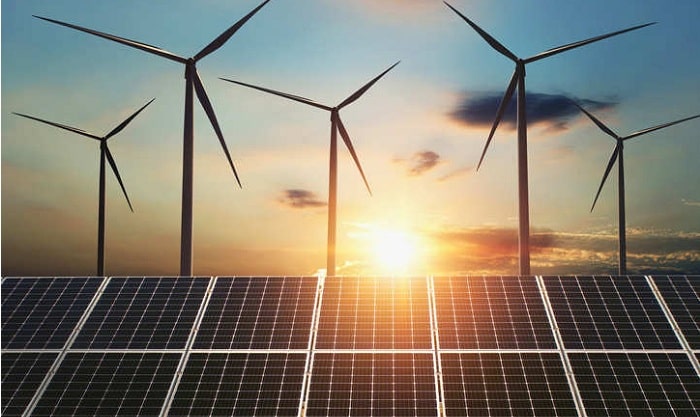India has an installed manufacturing capacity of about 3.1 gigawatt (GW) of PV cells and 11 GW of solar modules. However, out of the country’s annual demand of 10 GW solar PV equipment, nearly 85 per cent is still imported.
At a time when COVID-19 has disrupted global supply chains reiterating the need for energy security, the renewable energy industry is asking for innovative interventions such as tenders with a clear market access path along with a multi-pronged approach to help boost local manufacturing.
Chintan Shah, director – technical, IREDA, said that in order to push domestic manufacturing of renewable products the government must come out with schemes similar to the 12,000-megawatt (MW) CPSE scheme.
“Recently, the ministry of new and renewable energy had launched the CPSE scheme in which 12,000 MW projects would be put up by Central and state PSUs… this will take at least four to five years, which means you have the trajectory in place. I am sure there are going to be more such initiatives to push manufacturing,” Shah said at a virtual roundtable by ETEnergyWorld.
ALSO READ: Renewable energy investors to become ‘picky’ post-COVID, says industry Such schemes, he added, lay out a market access plan for four to five years for the manufacturers, which is an important factor for them when it comes to setting up of units. As that is the time required a manufacturer to amortize its plant and machinery costs running at a plant load factor of about 40-50 per cent.
“If a manufacturer will not see the market access plan for the next five years then they will not set-up the unit at all. And that is primarily the reason why solar manufacturing has not come up in India, because we have been pushing on the bid size,” Shah said at.
The CPSE Scheme is aimed at setting up 12,000-MW grid-connected solar PV power projects under the government producers with VGF support for self-use or by government entities either directly or through discoms.
With the COVID-19 pandemic underway, several countries are adopting the protectionist approach and are planning to go back to the closed economy model to protect their domestic industries from the global economic shock waves.
However, according to Sunil Jain, chief executive officer and executive director, Hero Future Energies, in terms of economies of scale in China, it is virtually very difficult for countries like India to talk of scale and pittance.
“Indian companies are very good at assembling the products rather than manufacturing them… We don’t have a complete value chain around one side… And keep going back to the government for subsidies to be able to compete with China… that is a completely wrong approach. The government should ban all imports and start Make In India,” Jain said at the event.
ALSO READ: SECI’s 2-GW ISTS tender oversubscribed by 2.35 GW; gets bids from 12 developers
He added that once, there is a belief that in the next three to four years everything will be made in India, then the government can open up the market and let them compete.
The primary objective behind creating a manufacturing base in India is to get supply security in the medium to long term, as various forecasts suggest that renewable energy would comprise 30-35 per cent of the power mix by 2030. This means that we need supply security in this core segment of the economy.
However, India’s solar power segment lacks strength in the upstream segment comprising polysilicon, wafers and even cells. This is primarily due to lack of scale and lack of a well-developed ecosystem of local suppliers.
“In the past, there wasn’t a clear roadmap of policy support in terms of incentives and providing demand certainty, so this led to fragmented capacity creation and lack of scale. However, the government now seems to be keen to support and encourage large scale domestic manufacturing,” said Santosh Kamath, partner and leader – alternate energies, KPMG in India.
Saibaba Vutukuri, CEO at Vikram Solar, said that in order to build a complete manufacturing base in India, the manufacturers would require support in terms of customs duty to stop dumping by the Chinese.
“Government will need to address the interest cost of 12-13 per cent, which is a lot more as compared to China’s 5-6 per cent. They should also provide access to capital in order to nurture an industry,” Vutukuri said at the same event.
To ensure sufficient domestic capacity, the anchor investors need to be encouraged to set up large scale capacities in the upstream space, which would require a good incentive package.
“Second, the programme should also provide some comfort against any predatory pricing by importers in the interim period. This can destabilise investments. Third, a steady domestic market is necessary to provide demand certainty. While the economics of solar power will automatically help create the demand, we need to ensure the health of the power sector at large. Stresses at the discom end will be a dampener for investments in the value chain,” added Kamath.
India had imported solar cells and modules worth $1,179.89 million from China in the first nine months — April to December period — of the financial year 2019-20 (FY20), renewable energy minister R K Singh had told Parliament in March.
In FY17, FY18, and FY19 India’s solar imports from China stood at $2,817.34 million, $3,418.96 million, and $1,694.04 million, respectively. The total value of solar PV cells or solar cells imports, whether or not assembled in modules or panels, stood at $1,525.8 million for the April-December period of FY20.
According to KPMG in India estimates, renewable energy manufacturing can create over one million jobs by 2025 and be an export oriented industry if India gets the scale and cost model right.





































